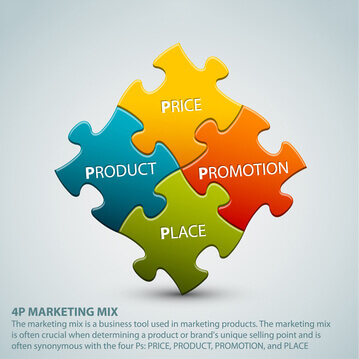10 Steps to Creating a Winning Marketing Strategy

The Right Questions and Action Items Help Build a Strategic Marketing Plan
The definitive goal of any marketing strategy is to help develop your business and build brand recognition; strengthening trust with current customers is a great by-product too. So, how do you do it?
In order for a marketing strategy to be fruitful, it must be realistic, multi-faceted, and consistent. Time, patience and persistence are key and, depending on the resources you have at hand, there are multitudes of ways in which you can meet your goals.
Before you start though, you will need to address a couple of questions:
- What are your objectives?
- What products or services- exactly– are you marketing?
Once you have a very clear understanding of the above two questions, you will be ready to sit down and start mapping out a strategy for developing awareness, recognition and loyalty for your brand.
Here are 8 action steps you can take to begin creating your marketing strategy:
Define your buyer personas.
This can be a fun exercise, but may take some extensive research. You will create actual profiles of each of the personas in your market, complete with pictures, job descriptions, marital or relationship status, parenting status, age, education, income, and geographic location. When you do this, you can tailor your marketing messages to these people.
Define your marketing message and brand language.
Start with a mission and vision statement; your brand’s voice should unfold pretty naturally from there.
Define your unique selling proposition (USP).
Your USP is your unique promise to your market and may be one of the most important aspects of your overall marketing message and strategy. A good, old example of this is Domino’s Pizza’s “30 minutes or less or it’s free”. Another great example is Kiva’s “Loans That Change Lives”. Note that each of these examples are are both clear and compelling.
Define pricing and positioning. Brand positioning and pricing are interdependent and largely contingent on competitive analysis. These two key elements will help differentiate your business from others and help you gain market share.
Define the media that will most effectively reach your target market.
A. Digital marketing: blogging, social media, websites, landing pages, sales funnels, e-books, podcasts, videos, and email marketing.
B. Traditional marketing: print ads, television ads, radio spots, newspaper or magazine articles, trade conventions, and branded promotional items.
Define your retention strategy.
Research from the U.S. Small Business Administration and U.S. Chamber of Commerce has shown that getting new customers can cost as much as 70% more than simply keeping existing customers. Put a good customer services policy into place, under promise, and over deliver. Customer relationship management is vital to the life of your business.
Define your marketing budget.
Speaking of costs, many entrepreneurs get so wrapped up in creating a phenomenal product or service that they forget that if no one knows about it, they won’t sell a thing. Expert strategists recommend allocating 20% of your budget toward marketing, and then continuing to invest 20% from your profits as you business grows onward and upward.
Define key performance indicators (KPIs).
Without metrics to define and measure your progress, you might as well be lighting a match to your marketing money. These quantifiable measures can be defined by your return on investment (ROI) or other factors unique to your business goals.
A good marketing plan is vital to your success; and, you can’t just map out your strategy and forget about it- because, you will forget about it. Write it out in a formal marketing plan. This written version of your strategy should detail all of the above action steps, be flexible enough to allow for modifications as needed, and stipulate tasks and responsibilities for each of your team members or departments.
